If you’ve ever dreamed of embarking on an exhilarating fishing adventure, conquering the mighty marlin should be at the top of your list. With “Can You Go Marlin Fishing: Tips and Techniques for Marlin Anglers,” you’ll gain valuable insights into the thrilling world of marlin fishing. This comprehensive guide is your key to unlocking the secrets of landing these prized creatures, offering expert tips and techniques that will help you reel in the catch of a lifetime. Whether you’re a seasoned angler or a novice in search of new challenges, this book will equip you with the knowledge and skills needed to embark on an unforgettable marlin fishing expedition.
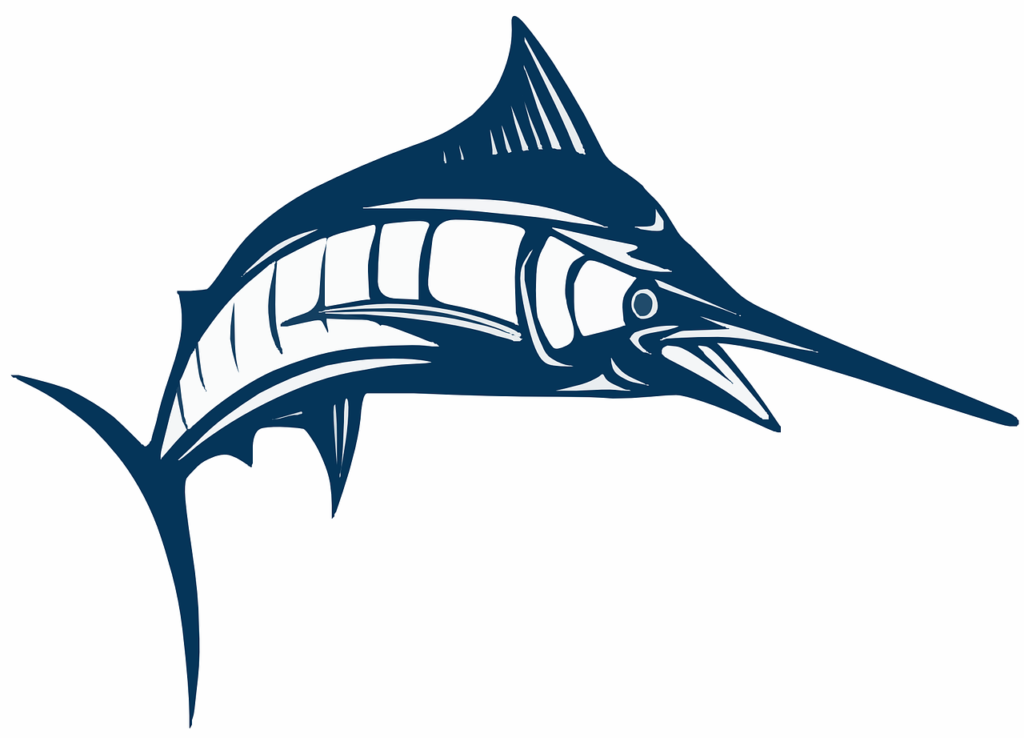
Safety Precautions
Choosing a Sturdy Vessel
When it comes to marlin fishing, your safety should be the top priority. Before setting out on your fishing adventure, it is crucial to choose a sturdy and reliable vessel. Look for a boat that is specifically designed for offshore fishing, with a strong hull and ample deck space. Ensure that the boat is well-maintained and equipped with the necessary safety features, such as life jackets, fire extinguishers, and a first aid kit. Additionally, make sure that the boat is equipped with proper navigation and communication systems to keep you connected and informed while out at sea.
Ensuring Proper Safety Equipment
In addition to choosing a sturdy vessel, it is vital to ensure that you have all the necessary safety equipment on board. This includes life jackets for every member of your fishing party, throwable flotation devices, a fire extinguisher, and a well-stocked first aid kit. It is also advisable to have emergency flares, a whistle or air horn, and a VHF radio for communication with the coastguard or nearby vessels in case of emergencies. Regularly inspect and maintain your safety equipment to ensure that it is always in good working condition.
Understanding Weather Conditions
Before embarking on a marlin fishing trip, it is essential to check the weather conditions and forecasts for the area you’ll be fishing. Weather can change rapidly at sea, and it is crucial to be aware of any potential storms or strong winds that could pose a risk to your safety. Pay attention to wind direction and speed, wave height, and any severe weather alerts. If the weather conditions are unfavorable or there are storm warnings, it is wise to postpone your fishing trip to a safer day. Your safety should always come first, so be cautious and knowledgeable about the weather conditions before setting out.
Selecting the Right Equipment
Choosing the Right Fishing Rod
Selecting the right fishing rod for marlin fishing is crucial to ensure maximum performance and success on your fishing trips. Marlin are large and powerful fish, so you’ll need a rod that can handle their strength. Look for a rod that is specifically designed for big game fishing, with a heavy-duty construction and a high line weight rating. The rod should have a comfortable grip and a sturdy reel seat to handle the weight and stress of fighting a marlin. Consider the length of the rod as well, as longer rods provide better leverage when battling these powerful fish.
Selecting the Appropriate Fishing Reel
When it comes to choosing a fishing reel for marlin fishing, there are several options to consider. Two of the most common types of reels used for marlin fishing are conventional reels and spinning reels. Conventional reels offer greater line capacity and more power, making them ideal for battling large marlin. Spinning reels, on the other hand, provide excellent casting ability and versatility. Whichever type of reel you choose, ensure that it has a strong and smooth drag system to handle the intense runs and jumps of marlin.
Picking the Ideal Fishing Line
Selecting the right fishing line for marlin fishing is crucial, as it is the link between you and the fish. Your line should have high abrasion resistance and be able to withstand the immense power and speed of marlin. Monofilament, fluorocarbon, and braided lines are all popular choices for marlin fishing, each offering different advantages. Monofilament lines provide good strength and flexibility, while fluorocarbon lines are invisible underwater, making them ideal for targeting wary marlin. Braided lines offer excellent strength and sensitivity, allowing you to feel even the subtlest of bites. Choose a line that suits your fishing style and the conditions you’ll be fishing in.
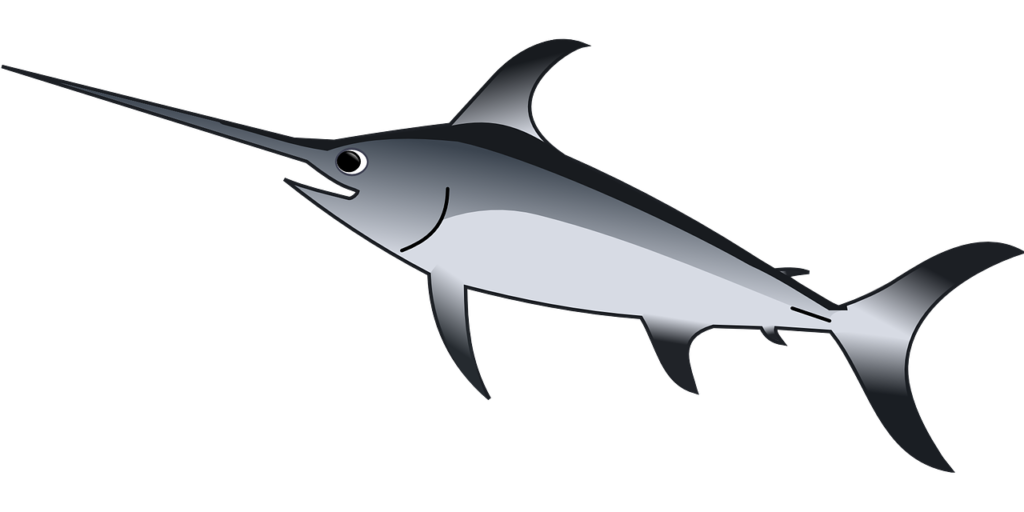
Researching the Best Locations
Identifying Marlin Hotspots
To increase your chances of success in marlin fishing, it is essential to research and identify the best fishing locations known for their marlin populations. Marlin hotspots are often found in offshore waters near continental shelves, upwelling zones, and areas with abundant baitfish. Look for areas with clear blue water, temperature breaks, and strong currents, as these are the preferred habitats of marlin. Consult fishing websites, forums, and local reports to gather information about the best marlin fishing spots in your desired location.
Considering Seasonal Migration Patterns
Marlin are highly migratory fish, and understanding their seasonal migration patterns can greatly improve your chances of encountering them. Different species of marlin have different migration patterns, with some traveling thousands of miles each year. Research the migration patterns of marlin species in your fishing area, and plan your trips accordingly. Marlin often follow warm water currents and the movements of baitfish, so be aware of the seasonal changes in water temperature and the availability of prey. By fishing in the right place at the right time, you can increase your chances of hooking a marlin.
Consulting Local Fishermen and Experts
One of the best ways to gain valuable insights and local knowledge about marlin fishing is by consulting experienced local fishermen and experts. They can provide you with crucial information about fishing techniques, bait preferences, and the best fishing spots in the area. Local fishing charters or tackle shops are great resources for connecting with knowledgeable guides and anglers. Strike up conversations with experienced anglers, attend fishing seminars or workshops, and join fishing clubs to expand your network and learn from those who have spent years pursuing marlin.
Learning Marlin Behavior
Understanding Feeding Habits and Preferences
To become a successful marlin angler, it is crucial to understand the feeding habits and preferences of these majestic fish. Marlin are predatory fish and primarily feed on small baitfish, squid, and other pelagic creatures. They are known for their aggressive strikes and lightning-fast attacks. Studying the natural prey of marlin in your fishing area can give you valuable insights into the types of lures, bait, and fishing techniques that are likely to attract them. Pay attention to the location and behavior of baitfish, as marlin often feed in areas where baitfish are abundant.
Observing Migration Patterns
Marlin are migratory fish and have specific migration patterns that can vary depending on the species and the time of year. Observing these migration patterns can be highly beneficial for predicting where marlin are likely to be found. Keep an eye on temperature breaks, current lines, and other factors that can influence marlin migration. By understanding their movement patterns, you can target areas where marlin are most likely to be present during their migration.
Identifying Breeding Seasons
Understanding the breeding seasons of marlin can provide valuable insight into their behavior and may increase your chances of encountering them. Different species of marlin have different breeding seasons, which can vary based on factors such as water temperature and availability of food. Research the breeding seasons of marlin in your fishing area to determine the best times to target them. During the breeding season, marlin are often more active and aggressive, making it an excellent time for anglers to try their luck.
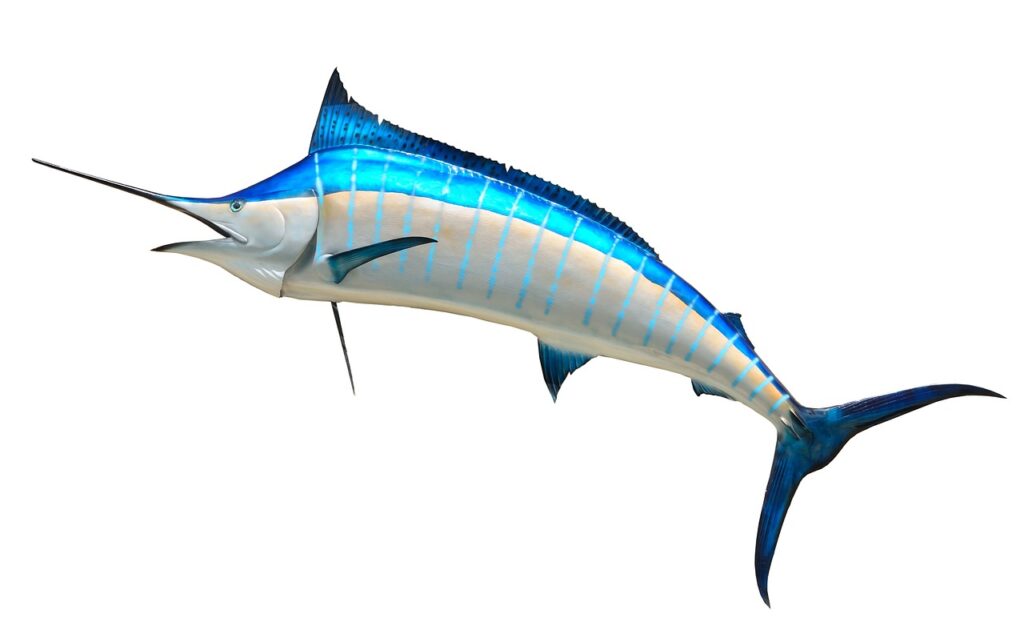
Mastering Bait and Lure Techniques
Using Live Bait for Marlin Fishing
Live bait is a highly effective technique for targeting marlin. It involves using live fish, such as bonito, mackerel, or herring, as bait to attract marlin. The live baitfish should be rigged with a sturdy hook and a wire leader to withstand the sharp teeth and powerful strikes of marlin. When fishing with live bait, it is important to keep the baitfish lively and natural-looking in the water. Slow-trolling or drifting the live baitfish near potential feeding areas can entice marlin to strike. Stay vigilant and watch for any signs of marlin activity, such as jumping or slashing near the baitfish.
Utilizing Artificial Lures for Marlin
Artificial lures are another popular technique for marlin fishing. There are various types of lures designed specifically for targeting marlin, including skirted trolling lures, diving plugs, and surface poppers. Skirted trolling lures are commonly used for marlin fishing, as they mimic the appearance of baitfish and create a realistic swimming action in the water. Diving plugs can be effective for targeting deeper swimming marlin, while surface poppers can trigger explosive strikes from marlin feeding near the surface. Experiment with different types and colors of lures to find what works best in your fishing area.
Experimenting with Different Colors and Sizes
When using artificial lures for marlin fishing, don’t be afraid to experiment with different colors and sizes to find the most effective combination. Marlin can be attracted to a variety of colors, such as blue, green, black, and silver. The size of the lure can also play a role in enticing marlin to strike. Larger lures often mimic the size of the natural prey that marlin feed on, while smaller lures can be effective for targeting juvenile marlin or during times when the fish are feeding on smaller baitfish. Be observant and flexible, and adjust your lure selection based on the conditions and the preferences of the marlin.
Understanding Hook Placement
Determining the Best Hook Size
Choosing the right hook size is crucial for successfully hooking and landing marlin. When targeting these powerful fish, it is important to use strong and durable hooks that can withstand the immense force exerted by marlin during a fight. The hook size should be appropriate for the size of the bait you are using and the size of marlin you expect to encounter. Larger hooks are generally used for targeting larger marlin, while smaller hooks may be suitable for targeting juveniles or smaller species of marlin. Consult local experts or experienced anglers to determine the best hook size for marlin fishing in your area.
Properly Rigging Ballyhoo for Marlin
Ballyhoo is a popular baitfish used in marlin fishing, and it requires proper rigging to ensure that it swims naturally and attracts marlin effectively. The rigging process involves attaching the hook to the ballyhoo while maintaining its natural swimming action. Start by inserting the hook into the mouth of the ballyhoo and out through its bottom jaw. Slide the hook along the lower jaw of the baitfish, securing it with rigging floss or rubber bands. The hook point should be exposed to increase the chances of a solid hookset. Properly rigged ballyhoo can be trolled behind the boat or presented as a teaser to entice marlin strikes.
Ensuring Adequate Hookset
A solid hookset is crucial for successfully landing marlin. When the marlin strikes, it is important to quickly and firmly set the hook to ensure a secure connection. To achieve a good hookset, it is essential to maintain tension on the line and keep a close eye on the rod tip. When you feel a strike or see the rod tip twitch, swiftly reel in any slack line and jerk the rod tip upward to set the hook. A solid hookset will help prevent the marlin from throwing the hook during its initial run. Practice your hooksetting technique to ensure a higher success rate when targeting marlin.
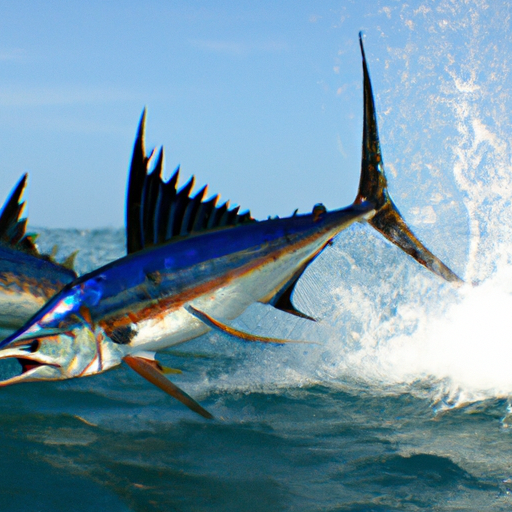
Trolling Techniques
Setting Up Trolling Spread
Trolling is a widely used technique for marlin fishing, and setting up an effective trolling spread is key to attracting and hooking these magnificent fish. Start by positioning your trolling lures at different distances behind the boat to create a spread that covers different depths of the water column. This can be achieved by using outriggers or downriggers to spread the lures out. Using multiple lines with different lures and colors can also increase your chances of enticing marlin. The spacing between the lures should be carefully considered to avoid tangles. Experiment with different setups and adjust as needed based on the conditions and the behavior of the marlin.
Speed and Depth for Trolling
The speed and depth at which you troll can greatly impact your success in marlin fishing. The ideal trolling speed for marlin varies depending on several factors, including the lure type, sea conditions, and the behavior of the fish. Generally, a speed of around 6 to 8 knots is a good starting point for trolling. However, it is essential to pay attention to the behavior of the lures in the water to determine if adjustments are needed. If the lures are not swimming properly or appear to be skipping on the surface, you may need to increase or decrease your trolling speed. Additionally, adjusting the depth at which you troll can be achieved by using diving plugs or by adding weight to the line.
Optimal Trolling Speeds
When trolling for marlin, it is important to find the optimal trolling speed that will attract strikes from these fast and aggressive fish. The ideal trolling speed can vary depending on factors such as the lure type, sea conditions, and the species of marlin you are targeting. As a general guideline, a trolling speed of around 7 to 9 knots is often effective for targeting marlin. However, it’s important to adjust your speed based on the behavior of the lures in the water. Observing the swimming action and tracking the speed at which the lures are being trolled can help you find the sweet spot that triggers marlin strikes. Always be prepared to fine-tune your trolling speed to maximize your chances of success.
Fighting and Landing Marlin
Playing the Fish
Fighting a marlin is a thrilling and challenging experience that requires skill and patience. When hooked, marlin are known for their powerful runs, acrobatic leaps, and long fights. To effectively play the fish, it is crucial to maintain a balanced and controlled approach. Keep constant tension on the line by applying consistent pressure to the fish, while also allowing it to make its runs and jumps. Use the rod to absorb the shock and follow the movement of the marlin, avoiding any sudden or jerky movements that could result in a lost fish. Be prepared for the endurance battle, as marlin fights can last for hours. Stay focused, remain calm, and enjoy the experience of battling one of the ocean’s most prestigious game fish.
Using Proper Angling Techniques
Employing proper angling techniques can make a significant difference in your ability to successfully land a marlin. When fighting a marlin, it is important to keep the rod tip up to exert maximum pressure on the fish and prevent it from diving deep to escape. Use smooth and steady reeling and avoid excessive force that could result in a broken line or pulled hook. If the marlin makes a powerful run, allow the line to peel off the reel without resistance, ensuring that it doesn’t exceed the line’s breaking strength. Maintain constant communication and coordination with your fishing partners to avoid any tangles or crossed lines during the fight.
Landing and Releasing Marlin
Once you have successfully fought and exhausted a marlin, it is essential to follow proper landing and handling techniques to ensure the fish’s safe release. Landing a marlin requires skill and coordination, especially for larger fish. Ideally, the marlin should be brought alongside the boat, allowing a crew member to safely grip its bill or leader. Do not attempt to lift the fish entirely out of the water, as this could cause harm to the marlin and potentially lead to injury for you or your fishing partners. When releasing the marlin, gently slide it back into the water headfirst, ensuring that it is strong and able to swim away. Proper handling and quick release are crucial for the overall conservation efforts and sustainability of marlin populations.
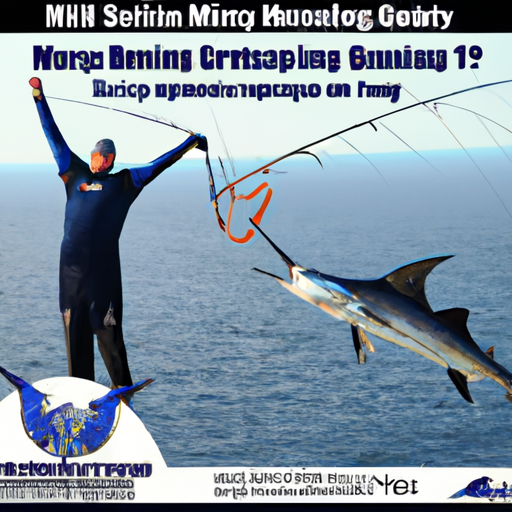
Marlin Tagging and Conservation
Understanding the Importance of Tagging
Marlin tagging is an important practice that contributes to the scientific understanding of these remarkable fish and aids in their conservation efforts. By tagging marlin, researchers can gather valuable data about their movement patterns, growth rates, and population dynamics. This information is crucial for implementing effective management strategies and ensuring the sustainability of marlin populations. Participating in tagging programs or reporting tagged marlin encounters can greatly contribute to ongoing research and conservation efforts.
Following Tagging Procedures
If you choose to participate in marlin tagging programs, it is essential to familiarize yourself with the proper tagging procedures. Tagging kits are available that provide detailed instructions on how to safely and effectively tag marlin. These kits typically include specialized tags, tagging poles, and data sheets for recording important information. When tagging a marlin, it is important to handle the fish with care, ensuring that it is well-supported and doesn’t experience unnecessary stress or harm. Follow the instructions provided in the tagging kit and make accurate observations about the fish before releasing it back into the water.
Participating in Conservation Efforts
Marlin are highly prized game fish, and their conservation is vital to ensure their long-term survival. As an angler, you can actively participate in conservation efforts by practicing catch-and-release fishing whenever possible. Release any marlin that you do not plan to keep for consumption, ensuring that they are handled properly and have the best chance of survival. Additionally, support and engage with organizations that work toward marine conservation and sustainable fishing practices. By doing so, you contribute to the preservation of marlin populations and the overall health of the marine ecosystem for future generations to enjoy.
Booking a Charter or Guide
Researching Reputable Charter Services
Booking a charter or guide for your marlin fishing adventure can greatly enhance your experience and increase the likelihood of success. To ensure a memorable and productive trip, take the time to research reputable charter services in your desired fishing location. Look for well-established charters with experienced captains and knowledgeable crew members who understand the nuances of marlin fishing. Read reviews, check their track record, and inquire about their equipment and safety measures. A reputable charter service will prioritize your safety and work diligently to provide you with a rewarding marlin fishing experience.
Considering Local Guides and Experts
Local guides and experts can provide invaluable assistance when it comes to marlin fishing. Their knowledge of the local waters, fishing hotspots, and techniques can significantly increase your chances of encountering marlin. Consider hiring a local guide, especially if you are unfamiliar with the area or new to marlin fishing. Local guides can offer insider tips, share their personal experiences, and ensure that you have the best opportunity to hook a marlin. Working with a guide allows you to focus solely on fishing, as they take care of navigation, rigging, and providing you with all the necessary equipment.
Comparing Rates and Services
When booking a charter or guide for marlin fishing, it is important to compare rates and services to ensure that you are getting the best value for your money. Rates can vary depending on factors such as the duration of the trip, the size of the boat, and the reputation of the service provider. Consider your budget, the level of expertise you require, and the type of experience you desire when comparing different charters or guides. Ask for detailed information about what is included in the package, such as fishing equipment, bait, and refreshments. By doing your research and making informed comparisons, you can select a charter or guide that meets your needs and provides you with an unforgettable marlin fishing experience.
In conclusion, marlin fishing requires careful preparation and a solid understanding of the fish’s behavior and habits. By following safety precautions, selecting the right equipment, researching the best locations, mastering bait and lure techniques, understanding hook placement, learning trolling techniques, and practicing proper fighting and landing techniques, you can greatly increase your chances of success in marlin fishing. Additionally, participating in marlin tagging and conservation efforts and booking a reputable charter or guide can enhance your fishing experience and contribute to the sustainability of marlin populations. With dedication, patience, and knowledge, you can embark on an exciting marlin fishing adventure and create lasting memories on the open seas.





